★★
“Promising concept gets bogged down in man-hating chick-anery.”
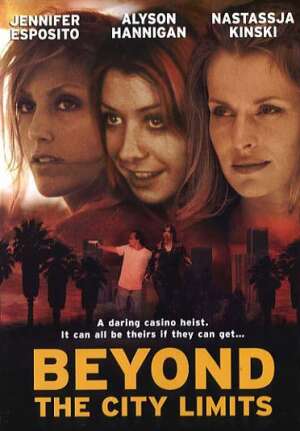 “It was a nightmare to shoot: the producer and director were constantly fighting… It was completely unorganised. Alexis [Denisof] was also in it and he and I would go into each other’s trailers and go, “We’ve made a huge mistake, this is the worst thing ever!” It just went terribly, terribly wrong.” So says Hannigan: wouldn’t say it was that bad, but it certainly ain’t good, either.
“It was a nightmare to shoot: the producer and director were constantly fighting… It was completely unorganised. Alexis [Denisof] was also in it and he and I would go into each other’s trailers and go, “We’ve made a huge mistake, this is the worst thing ever!” It just went terribly, terribly wrong.” So says Hannigan: wouldn’t say it was that bad, but it certainly ain’t good, either.
After the girlfriends (Hannigan & Kinski) of two Russian crooks get dumped, they sabotage a casino heist as revenge, then take it on themselves, with the security manager’s assistance. This crime is easily the most interesting part of the film, as things go awry and must be dealt with. Wish it had turned up an hour earlier, instead of the “men are utter bastards” whining that occupies the first two-thirds. The presence of Sophie B. Hawkins, both on screen and the soundtrack, doesn’t reduce the irritant factor any.
Why do they need police assistance? Why the random voice-overs? Why is Esposito’s cop ex-husband (Field) suddenly chased by other officers? This film doesn’t so much finish, as end, and most of the cast, save Russian psycho Brian McCardie, act as if drugged – perhaps literally in Hannigan’s case, since she plays a junkie. [Just like in American Pie, she seems keen to leave Buffy far behind, though she’s bisexual here too]. The US retitling is obviously intended to invoke Set It Off: that such a lame ploy is deemed necessary is all you need to know.
Dir: Gigi Gaston
Star: Alyson Hannigan, Nastassja Kinski, Jennifer Esposito, Todd Field
a.k.a. Rip It Off





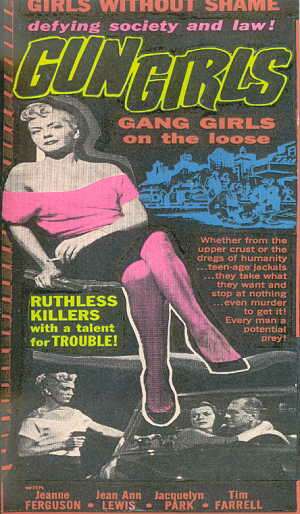 Based on the director’s novel, Girls on Parole, this prime slice of Juvenile Delinquent nonsense remains endlessly fascinating for students of “bad” movies, not least for its schizophrenic approach. It manages to combine moralistic doctrine – most notably from a parole officer who speaks Entirely In Headlines – and exploitation, with the heroines stripping down to their foundation garments (hey, this was 1956, whaddya expect?) about every ten minutes.
Based on the director’s novel, Girls on Parole, this prime slice of Juvenile Delinquent nonsense remains endlessly fascinating for students of “bad” movies, not least for its schizophrenic approach. It manages to combine moralistic doctrine – most notably from a parole officer who speaks Entirely In Headlines – and exploitation, with the heroines stripping down to their foundation garments (hey, this was 1956, whaddya expect?) about every ten minutes.
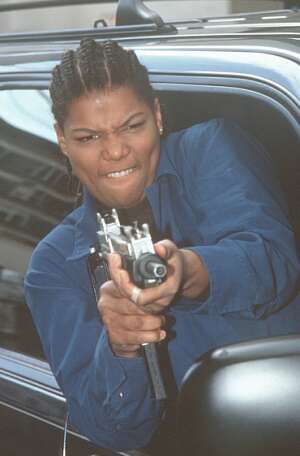 After a couple of less-than-perfect entries in the ‘robbery girls’ subgenre, this came as a refreshing blast, with decent characterisation and a storyline that goes past the painfully obvious. Mind you, the moral remains the same – crime doesn’t pay – but at least the road taken to get there is interesting and complex. These women all have their own reasons for wanting to rob banks: getting back at society for perceived injustice, supporting a child, or simply for kicks. Interestingly, you can see both their point of view and society’s, the latter most clearly in a surprisingly sympathetic cop, Strode (John C. McGinley). The results are more a product of tragic circumstance than anything else.
After a couple of less-than-perfect entries in the ‘robbery girls’ subgenre, this came as a refreshing blast, with decent characterisation and a storyline that goes past the painfully obvious. Mind you, the moral remains the same – crime doesn’t pay – but at least the road taken to get there is interesting and complex. These women all have their own reasons for wanting to rob banks: getting back at society for perceived injustice, supporting a child, or simply for kicks. Interestingly, you can see both their point of view and society’s, the latter most clearly in a surprisingly sympathetic cop, Strode (John C. McGinley). The results are more a product of tragic circumstance than anything else.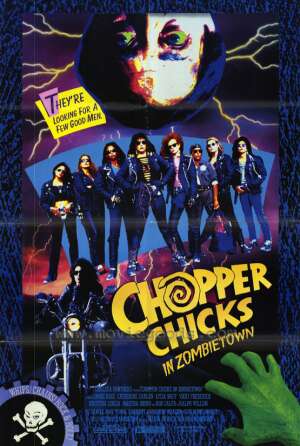 The Cycle Sluts motorcycle gang roar into town, to the consternation and distaste of locals, who drive them off. This decision is regretted soon afterwards, when they come under siege from the walking dead, raised to work in the local mine – a plot stolen from Hammer’s Plague of the Zombies – by the local mortician (Calfa) and his midget assistant. Luckily, the girls are still near, and can assist the townsfolk, including Billy Bob Thornton, who plays a redneck hick, proving it’s possible to be stereotyped
The Cycle Sluts motorcycle gang roar into town, to the consternation and distaste of locals, who drive them off. This decision is regretted soon afterwards, when they come under siege from the walking dead, raised to work in the local mine – a plot stolen from Hammer’s Plague of the Zombies – by the local mortician (Calfa) and his midget assistant. Luckily, the girls are still near, and can assist the townsfolk, including Billy Bob Thornton, who plays a redneck hick, proving it’s possible to be stereotyped 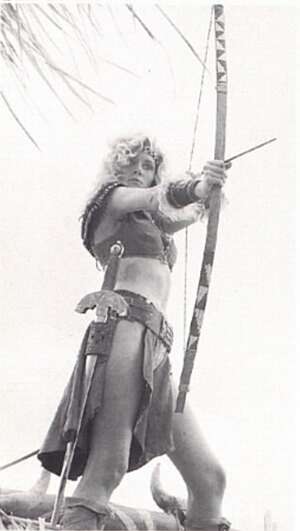 With the untimely death of Lana Clarkson (legal advisers suggested we not use “murder by a crazed record producer”), this takes on a certain poignant quality, especially when she uses lines like, “I’ll be no man’s slave and no man’s whore.” Clarkson pioneered sword-swinging feminism well before Xena, and while no-one is going to mistake this for high art, it gallops along at a fine pace – lasting barely 70 minutes, it could hardly do otherwise.
With the untimely death of Lana Clarkson (legal advisers suggested we not use “murder by a crazed record producer”), this takes on a certain poignant quality, especially when she uses lines like, “I’ll be no man’s slave and no man’s whore.” Clarkson pioneered sword-swinging feminism well before Xena, and while no-one is going to mistake this for high art, it gallops along at a fine pace – lasting barely 70 minutes, it could hardly do otherwise.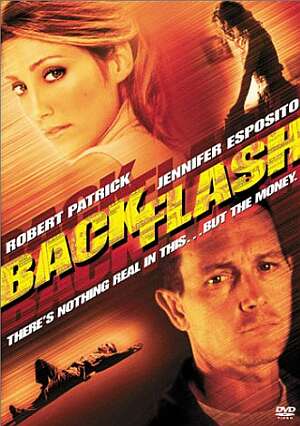 Harley (Esposito) comes out of prison, and links up with timorous video store owner Ray (Patrick), who must impersonate her boyfriend in order to collect $2m stashed in a safe-deposit box. The cash was swindled from mob money-shuffler Gin (Meaney) – understandably he’s keen to get it back before his boss notices. You will not be surprised to hear that hardly anyone in this film is quite what they seem.
Harley (Esposito) comes out of prison, and links up with timorous video store owner Ray (Patrick), who must impersonate her boyfriend in order to collect $2m stashed in a safe-deposit box. The cash was swindled from mob money-shuffler Gin (Meaney) – understandably he’s keen to get it back before his boss notices. You will not be surprised to hear that hardly anyone in this film is quite what they seem.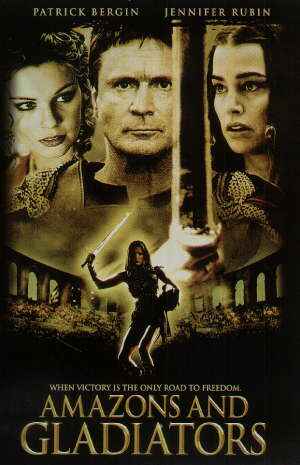 Benefiting from a slew of decent performances, A&G manages to surpass most of the competition and become a worthy entry in the “gladiatrix” sub-genre. This is perhaps because the cast have been hired either because they can act or because they can fight, while simultaneously not embarrassing themselves in the other department. Pity poor Hiltz, who is in virtually every scene, yet doesn’t even get her name on the cover.
Benefiting from a slew of decent performances, A&G manages to surpass most of the competition and become a worthy entry in the “gladiatrix” sub-genre. This is perhaps because the cast have been hired either because they can act or because they can fight, while simultaneously not embarrassing themselves in the other department. Pity poor Hiltz, who is in virtually every scene, yet doesn’t even get her name on the cover.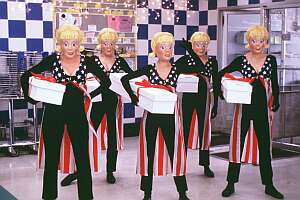 “Get ready to cheer for the bad girls,” goes the tag-line, and despite an exterior fluffier than candy-floss, the message here is actually extremely subversive: crime
“Get ready to cheer for the bad girls,” goes the tag-line, and despite an exterior fluffier than candy-floss, the message here is actually extremely subversive: crime 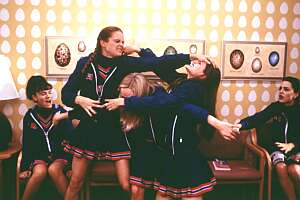 Certainly not the best high-school studio satire ever (Heathers or Election), it’s likely the only one post-Columbine to feature semi-automatics, albeit in watered-down fashion. According to Mena Suvari, “It was really frustrating, because the movie we all signed on to do was very dark and very offensive, and while the finished movie is still that to a degree, it’s completely different.” One can only imagine what the original would have been like.
Certainly not the best high-school studio satire ever (Heathers or Election), it’s likely the only one post-Columbine to feature semi-automatics, albeit in watered-down fashion. According to Mena Suvari, “It was really frustrating, because the movie we all signed on to do was very dark and very offensive, and while the finished movie is still that to a degree, it’s completely different.” One can only imagine what the original would have been like.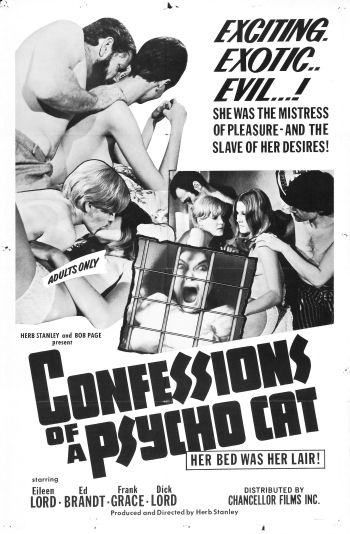
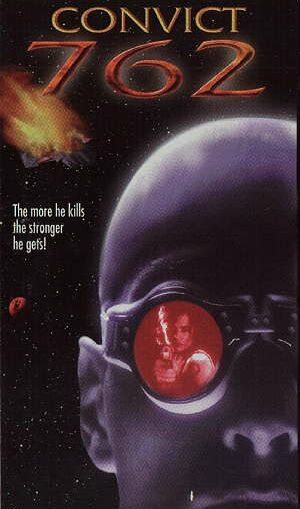 A good idea – even if one borrowed about equally from Pitch Black and Aliens – gets sucked into the void and drained of all life, thanks to some of the most turgid direction imaginable. A ship with an all-female crew has to land on a prison planet for fuel, but finds only two people left. Which is the mass murderer? Can they find out before they get picked off, one by one…?
A good idea – even if one borrowed about equally from Pitch Black and Aliens – gets sucked into the void and drained of all life, thanks to some of the most turgid direction imaginable. A ship with an all-female crew has to land on a prison planet for fuel, but finds only two people left. Which is the mass murderer? Can they find out before they get picked off, one by one…?